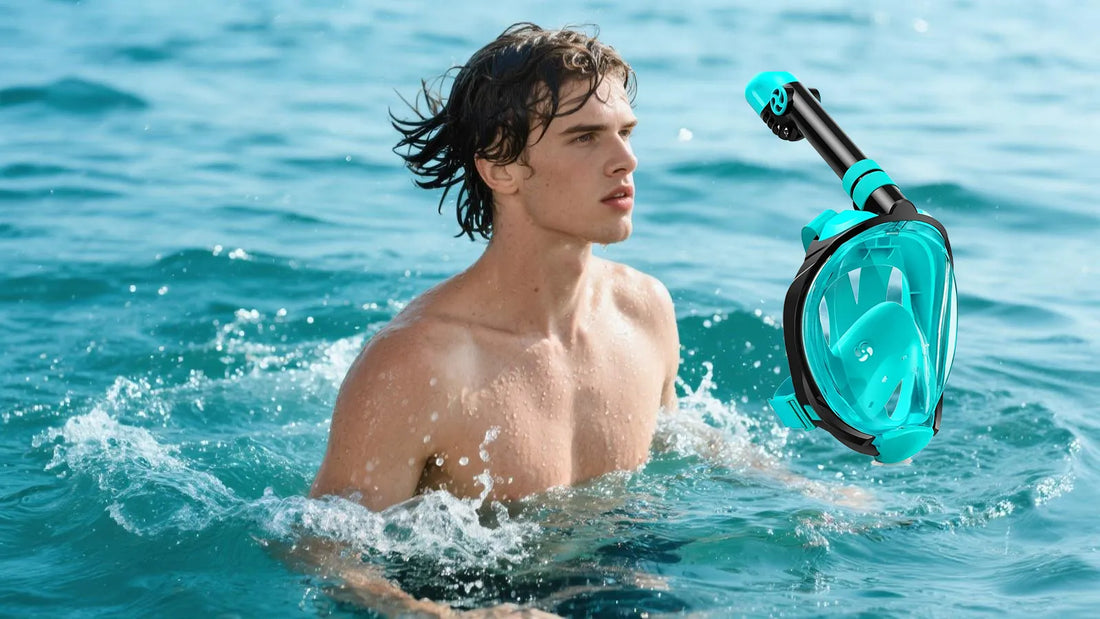Have you ever been in the middle of a perfect swim, only to find your vision obscured by foggy goggles? It’s a frustrating experience that can disrupt your rhythm and enjoyment. Understanding why swimming goggles fog up is the first step to solving this common problem. Let’s dive into the science behind it and explore effective ways to keep your goggles clear.
The Science Behind Foggy Goggles
Fogging occurs when warm, moist air from your body comes into contact with the cooler surface of the goggle lens. This temperature difference causes the moisture in the air to condense into tiny water droplets, which scatter light and create a foggy appearance. This phenomenon is similar to what happens when you breathe on a cold window.
Swimming goggles are particularly prone to fogging because they create a sealed environment around your eyes. This seal traps the warm air from your skin, increasing the likelihood of condensation. Additionally, the lenses of swimming goggles are often made from materials that can attract moisture, exacerbating the problem.
Common Causes of Fogging
Several factors contribute to why swimming goggles fog up. One of the primary causes is the natural oils and sweat from your skin. These substances can transfer to the lens, creating a surface that attracts moisture. Even small amounts of residue can significantly increase fogging.
Another factor is the design of the goggles. Some goggles have poor ventilation, which allows warm air to accumulate inside the lens. Additionally, the quality of the anti-fog coating on the lens plays a crucial role. Over time, this coating can wear off, reducing its effectiveness.
Environmental conditions also play a part. Swimming in cold water or in a pool with high humidity can increase the temperature difference between the air inside the goggles and the lens, leading to more condensation.
Preventing Foggy Goggles
Fortunately, there are several strategies you can use to prevent your swimming goggles from fogging up. One of the most effective methods is to apply an anti-fog solution to the lens. These solutions work by creating a hydrophilic surface that prevents water droplets from forming. You can purchase anti-fog sprays or wipes, or even use natural remedies like baby shampoo.
Another tip is to ensure your goggles fit properly. A good seal around your eyes will minimize the amount of warm air that gets trapped inside. However, it’s important to strike a balance—goggles that are too tight can cause discomfort and may not provide adequate ventilation.
Regular maintenance is also key. Rinse your goggles with fresh water after each use to remove any oils, sweat, or chlorine residue. Avoid touching the inside of the lens with your fingers, as this can transfer oils and reduce the effectiveness of the anti-fog coating.
DIY Anti-Fog Solutions
If you prefer a more natural approach, there are several DIY anti-fog solutions you can try. One popular method is to apply a small amount of baby shampoo to the lens and then rinse it off. The shampoo leaves a thin film that helps prevent fogging. Another option is to use saliva, which contains enzymes that can break down the surface tension of water droplets.
While these methods can be effective, they may not last as long as commercial anti-fog products. It’s also important to test any DIY solution on a small area of the lens first to ensure it doesn’t cause damage.
When to Replace Your Goggles
Even with proper care, the anti-fog coating on your goggles will eventually wear off. If you find that your goggles are fogging up despite your best efforts, it may be time to replace them. Look for goggles with a high-quality anti-fog coating and good ventilation to ensure they stay clear for as long as possible.
It’s also a good idea to replace your goggles if they become scratched or damaged. Scratches can create areas where moisture can accumulate, increasing the likelihood of fogging. Additionally, damaged goggles may not provide a proper seal, allowing warm air to enter and condense on the lens.
Additional Tips for Clear Vision
Beyond preventing fogging, there are other steps you can take to ensure clear vision while swimming. One tip is to adjust the position of your goggles before you start swimming. If they’re too high or too low on your face, they may not provide an optimal seal, increasing the risk of fogging.
Another tip is to avoid over-tightening the straps. While a snug fit is important, overly tight straps can cause discomfort and may not improve the seal. Instead, focus on finding a balance that provides both comfort and clarity.
Finally, consider the environment in which you’re swimming. If you’re swimming in a particularly humid or cold environment, you may need to take extra precautions to prevent fogging. For example, you could try using a thicker anti-fog solution or adjusting the ventilation of your goggles.
By understanding why swimming goggles fog up and taking proactive steps to prevent it, you can enjoy a clearer, more comfortable swim. Whether you’re a casual swimmer or a competitive athlete, clear vision is essential for making the most of your time in the water. So next time you hit the pool, don’t let foggy goggles get in your way—take control and keep your vision crystal clear.

